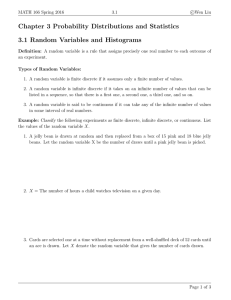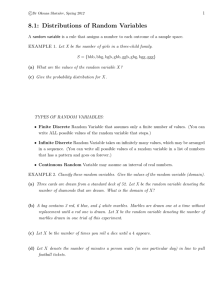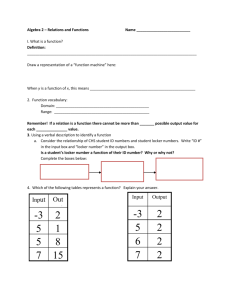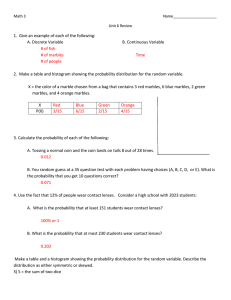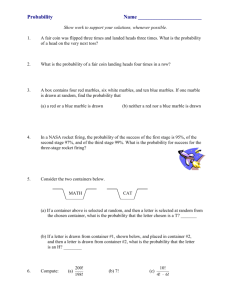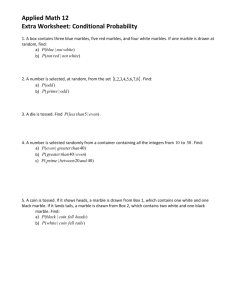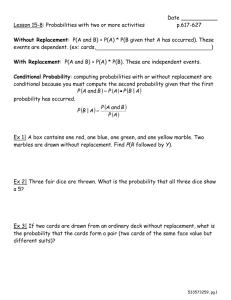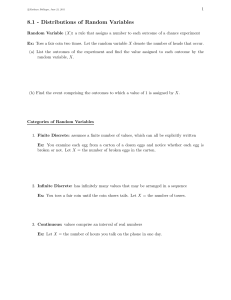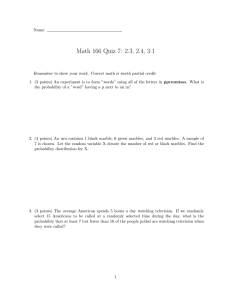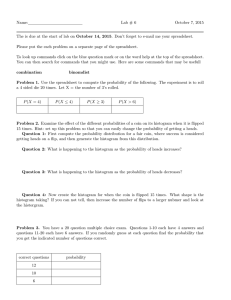MATH 141-501 Section 8.1 Lecture Notes
advertisement
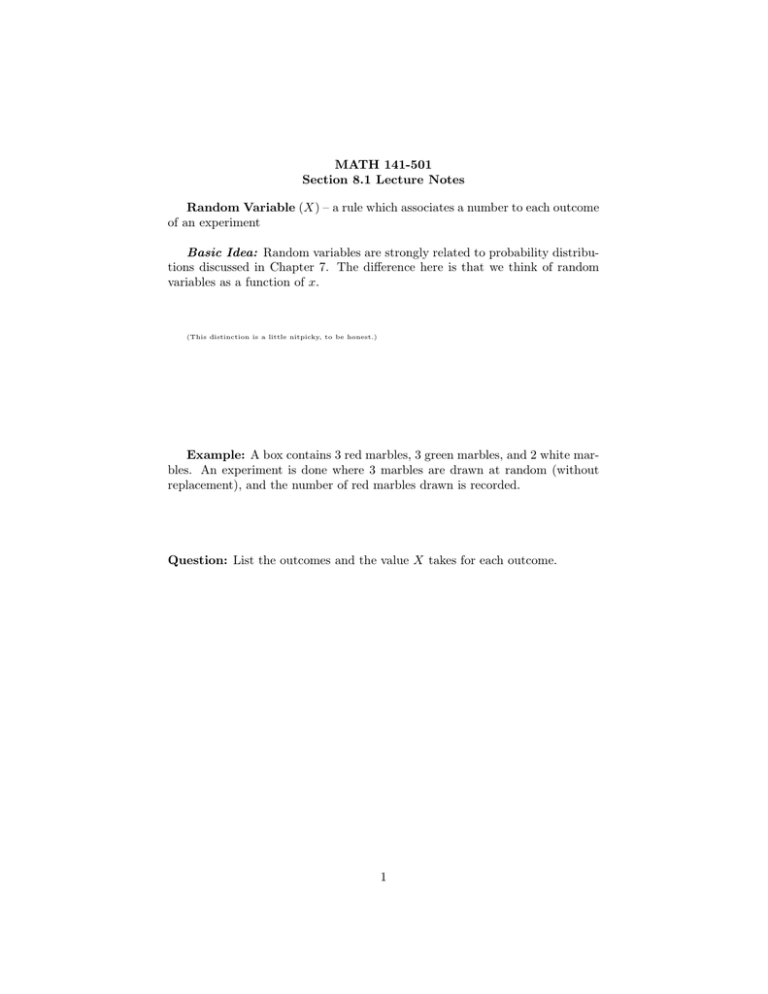
MATH 141-501 Section 8.1 Lecture Notes Random Variable (X) – a rule which associates a number to each outcome of an experiment Basic Idea: Random variables are strongly related to probability distributions discussed in Chapter 7. The difference here is that we think of random variables as a function of x. (This distinction is a little nitpicky, to be honest.) Example: A box contains 3 red marbles, 3 green marbles, and 2 white marbles. An experiment is done where 3 marbles are drawn at random (without replacement), and the number of red marbles drawn is recorded. Question: List the outcomes and the value X takes for each outcome. 1 Different Kinds of Random Variables: 1. Finite Discrete: There are only finitely many possibilities. (You can say “no more than” some number will occur.) Example: Cards are drawn (without replacement) from a deck of wellshuffled cards until the Queen of Hearts is drawn. Let X = total number of cards drawn. Example: A coin is flipped 8 times. Let X = number of heads observed. 2. Infinite Discrete: There are infinitely many possibilities, but there are still “gaps” of certain values can not occur. A giveaway that the random variable is infinite discrete is that the answer is “counted”, but unbounded in one direction. Example: A coin is flipped until it lands on a head. Let X = number of flips. Example: X is a person’s favorite positive whole number 3. Infinite Continuous: The possible values form an interval of real numbers. For any two possible values of the variable, there is another possible value between them. Example: (Time) X is the precise amount of time this class lasts on a given day Problems involving physical measurements are one of the main examples of infinite continuous random variables. When measuring time, volume, etc. there is always a theoretically “more precise” answer. (ignoring Quantum Physics) Example: (Volume) An experiment consists of measuring the precise amount of milk in a gallon jug of milk. Example: (“Pure math”) X is a number between 0 and 1. 2 Practice Question Are the following random variables finite discrete, infinite discrete, or infinite continuous? • Cards are drawn (with replacement) from a deck of well-shuffled cards until the Queen of Hearts is drawn. • The number of people from this MATH 141 class who show up for a given class. • The exact amount of water (in Liters, but with no rounding) in a 1-Liter gallon jug. 3 Probability Distributions and Histogram The probability distribution of a random variable is the same thing as before – a table which shows the probability of the outcome that X = x for different values of x. Example: An experiment consists of rolling a die and tossing a coin. If the coin comes up heads, we record the number on the die. If the coin comes up tails, we add one to the number on the die and record it. Let X = the number recorded. Find the probability distribution for this random variable. Background: Outcome Value of X Outcome Value of X 1H 2H 3H 4H 5H 6H 1T 2T 3T 4T 5T 6T Probability Distribution x P (X = x) 1 2 3 4 5 6 7 4 Histograms A histogram can be thought of as the “graph” of a random variable. The x-axis is labeled with the values of the random variables, while the y-axis is labeled from 0 to 1. Above each value of the random variable, there is a rectangle whose height is the probability (and whose width is equal to 1). Example: Create a histogram for the random variable from the previous page. 5 Example: Let X be the number of inches of rain received on a given day in a certain town. The histogram for the probability distribution is given below. On the basis of the histogram, answer the following questions. 1. What is the probability that on a given day, the town will receive exactly 0 inches of rain? 2. What is the probability that on a given day, the town will receive at least 3 inches of rain? 6
